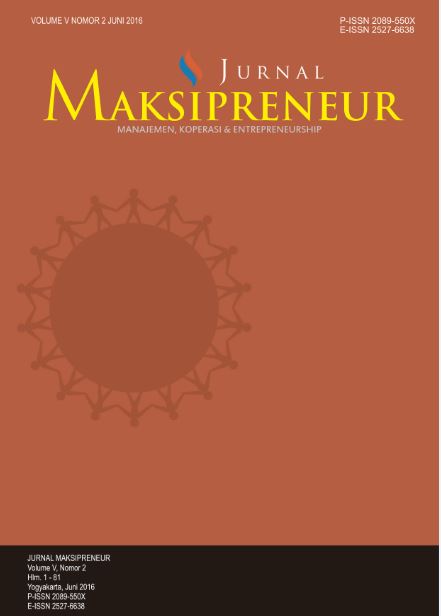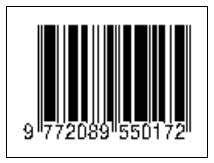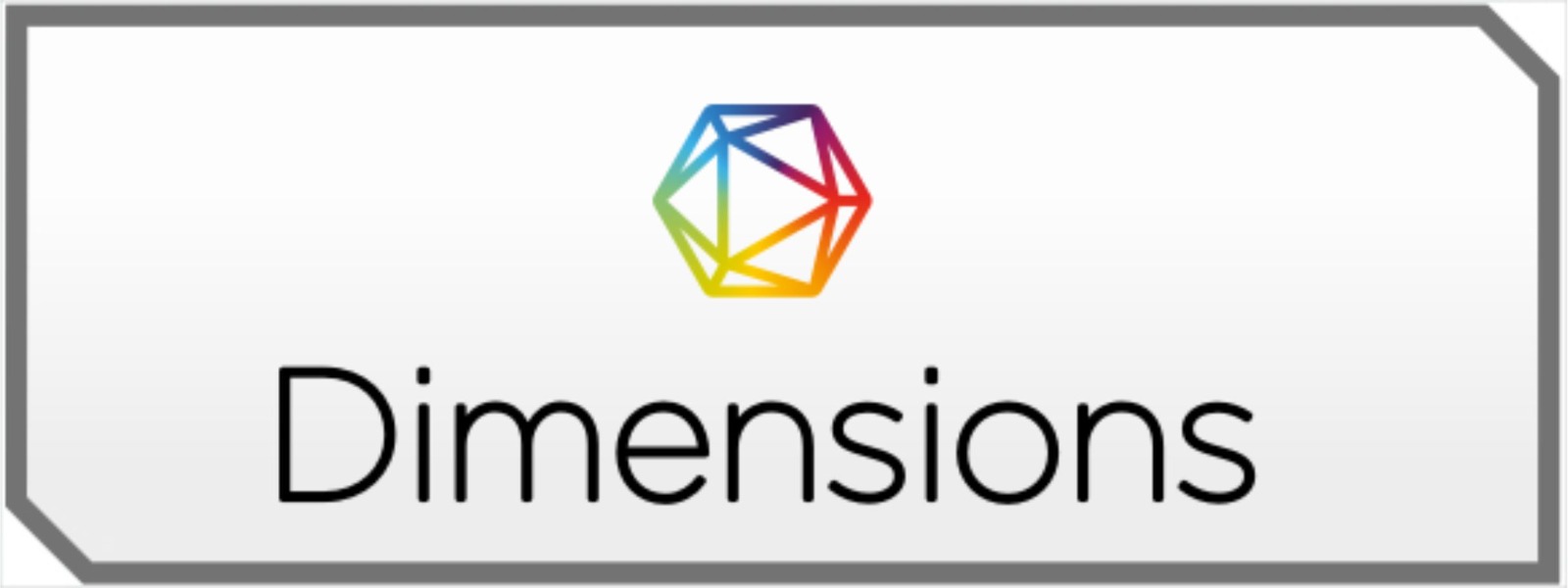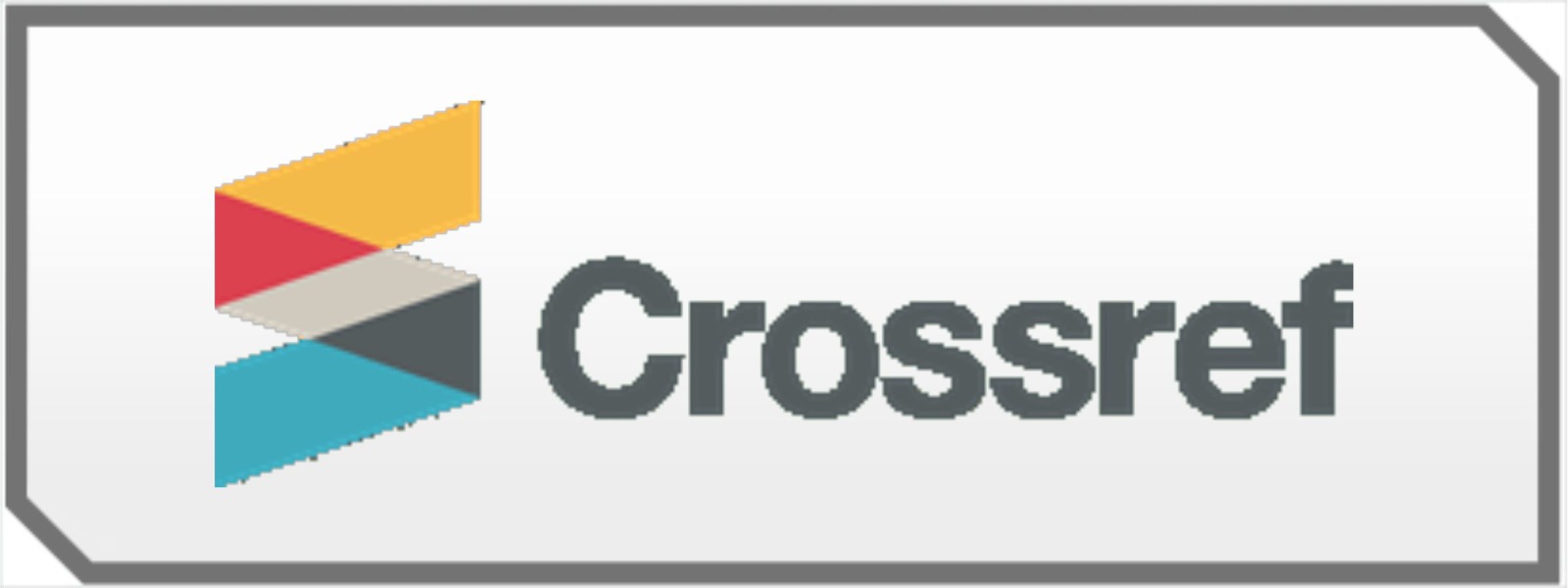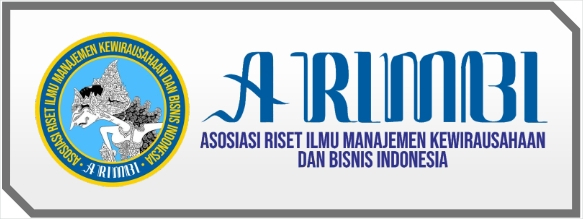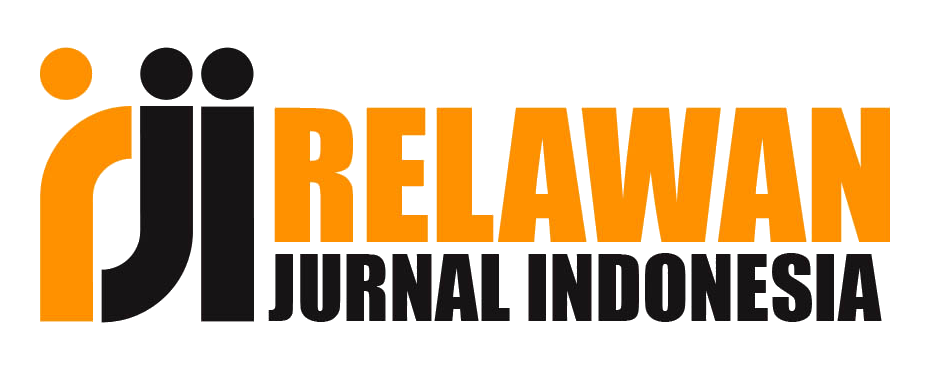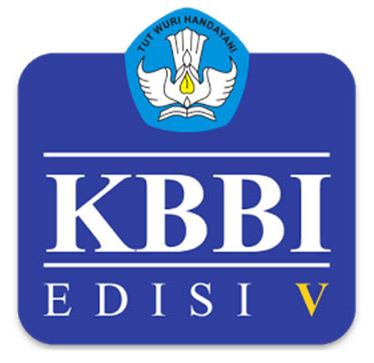A Theoretical Analysis of Consumer Behaviour for Voters in Ghana
DOI:
https://doi.org/10.30588/jmp.v13i2.1797Keywords:
Consumer behaviour, political marketing, the Ghanaian voter, voter behaviour, consumer decision processAbstract
This paper identifies evidence of political marketing and, more specifically, consumer-oriented political marketing to analyse the theories of consumer behaviour and identify evidence of consumer behaviour in marketing in the behaviour of Ghanaian voters. The examination used quantitative research to analyse the relationship between three elements: (1) psychology, (2) personal and (3) social to understand the theory of the relationships between campaign messages and voters’ behaviour. Data were collected through a cross-sectional survey with semi-structured questionnaires administered to 7203 randomly selected respondents from participating political parties and voters in Accra, Ghana. Data received were analysed using descriptive statistics and Structural Equation Modelling (SEM). Findings revealed a statistically significant relationship between the behaviour of voters in Ghana and the campaign messages of political parties. This paper concludes that there are opportunities for political marketing and change in voter behaviour. Still, sufficient attention should be given to the understanding of consumer behaviour theory that recognizes the behavioural dynamic of voters in the design of effective campaign messages that are responsive to voters’ needs.
References
Aaker, J. (1997). Dimensions of brand personality. Journal of Marketing Research, 34(3), 347-356. https://doi.org/10.1177/002224379703400304
Arora, A., Bansa, S., Kandpal, C., Aswani, R. and Dwivedi, W. K. 2019. Measuring social media influencer index- insights from facebook, Twitter and Instagram. Journal of Retailing and Consumer Services, 49, 86-101.
Aruma, E. and Hanachor, M. E. 2017. Abraham Maslow's hierarchy of needs and assessment of needs in community development. International Journal of Development and Economic Sustainability, 5(7), 15-27.
Auf, M. A., Meddour, H., Saoula, O., & Majid, A. H. (2018). Consumer buying behaviour: the roles of price, motivation, perceived culture importance, and religious orientation. Journal of Business and Retail Management Research, 12(4), 177-186. http://doi.org/10.24052/JBRMR/V12IS04/ART-18
Azoulay, A., & Kapferer, J. N. (2013). Do brand personality scales really measure brand personality? Journal of Brand Management, 11(2), 143-155. https://doi.org/10.1057/palgrave.bm.2540162
Banerjee, S. (2016). Influence of consumer personality, brand personality, and corporate personality on brand preference: an empirical investigation of interaction effect. Asia Pacific Journal of Marketing and Logistics, 28(2), 198-216. http://doi.org/10.1108/APJML-05-2015-0073
Belch, E. G., & Belch, A. M. (2004). Advertising and Promotion: An integrated marketing communications perspective. McGraw-Hill.
Belk, R. W. (1988). Possessions and the extended self. Journal of Consumer Research, 15(2), 139-168. http://dx.doi.org/10.1086/209154
Benet, V., & Waller, N. G. (1995). The big seven-factor model of personality description: evidence for its cross-cultural generality in a Spanish sample. Journal of Personality and Social Psychology, 69(4), 701-718. https://doi.org/10.1037/0022-3514.69.4.701
Bettman, J. R., & Park, C. W. (1980). Effects of prior knowledge and experience and phase of the choice process on consumer decision processes: A protocol analysis. Journal of Consumer Research, 7(3), 234-248. http://doi.org/10.1086/208812
Blythe, J. (1997). Essentials of Marketing. Prentice-Hall, Inc.
Brinberg, D., & Lutz, R. (1986). Perspectives on methodology in consumer research. Springer-Verlag. https://doi.org/10.1007/978-1-4613-8609-4
Bruner, G. C., & Pomazal, R. J. (1993). Problem recognition: The crucial first stage of the consumer decision process. Journal of Consumer Marketing, 5(1), 53-63. http://doi.org/10.1108/eb008219
Butler, P., & Collins, N. (2014). Political marketing: Structure and process. European Journal of Marketing, 28(1), 19-34. http://doi.org/10.1108/03090569410049154
Burnkrant, R. E. (1976). A motivational model of information processing intensity. Journal of Consumer Research, 3(1), 21-30. https://doi.org/10.1086/208647
Chaparro-Africano, A. M., & Garzón-Méndez, J. D. (2021). Consumer profile and factors determining the purchase of agroecological products. A case study: UNIMINUTO Agroecological Fair and Minuto de Dios Solidarity Market, Colombia. Agronomia Colombiana, 39(2), 179-195. http://doi.org/10.15446/agron.colomb.v39n2.89013
Douglas, M., & Isherwood, B. C. (2002). The world of goods: Towards an anthropology of consumption. Psychology Press. https://doi.org/10.4324/9780203434857
Durmaz, Y. (2014). The Impact of Psychological Factors on Consumer Buying Behavior and an Empirical Application in Turkey. Asian Social Science, 10(6), 194-204. https://doi.org/10.5539/ass.v10n6p194
East, R., Singh, J., Vanhuele, M., & Wright, M. (2008). Consumer behavior: Applications in Marketing. Sage Publications Ltd.
Ericksen, M., & Sirgy, M. J. (2012). Employed females ’clothing preference, self-image congruence and career anchorage. Journal of Applied Social Psychology, 22(5), 408-422. http://doi.org/10.1111/j.1559-1816.1992.tb01547.x
Folkes, V., & Matta, S. (2004). The effect of package shape on consumers’ judgments of product volume: Attention as a mental contaminant. Journal of Consumer Research, 31(2), 390-401. https://doi.org/10.1086/422117
Gigerenzer, G., & Gaissmaier, W. (2011). Heuristic decision making. Annual Review of Psychology, 62(1), 451-482. http://doi.org/10.1146/annurev-psych-120709-145346
Graefe, A., & Armstrong, J. S. (2010). Predicting elections from the most important issue: A test of the take-the-best heuristic. Journal of Behavioural Decision Making, 25(1), 41-48. http://doi.org/10.1002/bdm.710
Griskevicius, V., & Kenrick, D. T. (2013). Fundamental motives: How evolutionary needs influence consumer behaviour. Journal of Consumer Psychology, 23(3), 372-386. https://doi.org/10.1016/j.jcps.2013.03.003
Grubb, E., & Hupp, G. (1968). Perception of self, generalized stereotypes and brand selection. Journal of Marketing Research, 5(1), 58-63. https://doi.org/10.1177/002224376800500107
Hansen, T., & Jensen, J. M. (2007). Understanding voters’ decisions: A theory of planned behaviour approach. Innovative Marketing, 3(4), 88-96. http://www.businessperspectives.org.esc-web.lib.cbs.dk/component/option,com_journals/task,issue/id,68/jid,5/
Haridasan, A. C., Fernando, A. G., & Saju, B. (2019). A systematic review of consumer information search in online and offline environments. RAUSP Management Journal, 56(2), 234-253. http://doi.org/10.1108/RAUSP-08-2019-0174
Harris, P., & Lock, A. (2010). Mind the gap: the rise of political marketing and a perspective on its future agenda. European Journal of Marketing, 44(3/4), 297-307. http://doi.org/10.1108/03090561011020435
Haron, M., & Mokhtar, K. (2010). Political marketing mistakes: Lessons drawn from the malaysian political competition. University Sains.
Homer, P. and Kahle, L. R. (1988). A structural equation test of the value-attitude-behavior shierarchy. Journal of Personality and Social Psychology, 54, 638-646.
Howard, J. A., & Sheth, J. N. (1969). The theory of buyer behaviour. John Wiley & Sons, Inc.
John, O. P., & Srivastava, S. (1999). The big five trait taxonomy: History measurement, and theoretical perspectives. In L. A. Pervin & O. P. John (eds.), Handbook of Personality: Theory and Research (pp. 102–138). Guilford Press.
John, O. P., Naumann, I. P., & Soto, C. J. (2008). Paradigm shift to the integrative Big Five Trait taxonomy: History, measurement, and conceptual issues. In Handbook of Personality: Theory and Research (3rd edition) (pp.114-158). Guilford Press.
Jonsson, C. V. (2010). Consumer Psychology. Boyd Open University Press.
Karczewska, M. (2010). Determinanty zachowań konsumenckich na rynku, in: Krakowska Konferencja Młodych Uczonych. Kraków: Sympozja Konferencje KKMU. http://doi.org/10.14254/2071-8330.2013/6-1/10
Kardes, F. R., & Wyer, R. S. Jr. (2019). Consumer Information Processing. In D. E. Carlston (Ed.), The Oxford handbook of social cognition (pp. 806–828). Oxford University Press.
Kearney, E., Gebert, D., & Voelpel, S. C. (2009). When and how diversity benefits teams: The importance of team members’ need for cognition. Academic Management Journal, 52(3), 581-598. https://doi.org/10.5465/AMJ.2009.41331431
Keller, K. L. 2016. Integrating marketing communications: New findings, new lessons and new ideas. Journal of Marketing, 80(6), 122-145.
Khan, M. (2007). Consumer Behaviour and Advertising Management. New Age International Publishers.
Khan, S. S., & Liu, H. (2018). Exploring the impact on user information search behaviour of affective design: an eye tracking study. Institute of Research and Applicable Computing.
Khatri, J., Marín-Morales, J., Moghaddas, M., Guixeres, J., Giglioli, I., & Alcañiz, M. (2021). Recognizing personality traits using consumer behaviour patterns in a virtual retail store. The Journal Frontiers in Psychology, 13, 2-17. https://doi.org/10.3389/fpsyg.2022.752073
Kimmel, A. J. (2013). Psychological Foundations of Marketing. Taylor & Francis. https://doi.org/10.4324/9781315436098
Kotler, P. (2010). A generic concept of marketing. Journal of Marketing, 36(4), 46-54. http://doi.org/10.2307/1250977
Kotler, P., & Levy, S. J. (2007). Broadening the Concept of Marketing. Journal of Marketing, 33(1), 10-15. http://doi.org/10.2307/1248740
Kotler, P. 2017. Philip Kotler: some of my adventures in marketing. Journal of Historical Research in Marketing, 9(2), 203-208.
Kotler, P., Armstrong, G., Saunders, J. & Wong, V. (1996). Principles of Marketing. Prentice-Hall, Inc.
Landon, E. L. (2014). Self-concept, ideal self-concept, and consumer purchase intentions. Journal of Consumer Research, 2(1), 44-51. http://doi.org/10.1086/208590
Lane, R. (1983). Political Observers and Market Participants: The Effects on Cognition. Political Psychology, 4(3), 455-482. https://doi.org/10.2307/3790869
Lars, P. (2018). Consumer Behaviour: The Psychology of Marketing. University of Southern California.
Lee, S. (2017). Motivation Study Based on Expectancy Theory. The Florida State University College.
Luchs, M., & Mooradian, T. (2012). Sex, personality, and sustainable consumer behaviour: elucidating the gender effect. Journal of Consumer Policy, 15, 127-144. http://doi.org/10.1007/s10603-011-9179-0
Nicosia, F. M. (1966). Consumer Decision Processes. Prentice-Hall, Inc.
Makarewicz, A. (2013). Consumer behavior as a fundamental requirement for effective operations of companies. Journal of International Studies, 6(1), 103-109. http://doi.org/10.14254/2071-8330.2013/6-1/10
Masini, A., & Menichetti, E. (2012). Impact of behavioural factors in the renewable energy investment decision-making process: conceptual framework and empirical findings. Energy Policy, 40(1), 28-38. http://dx.doi.org/10.1016/j.enpol.2010.06.062
McCrae, R. R., & John, O. P. (2012). An introduction to the five-factor model and its applications. Journal of Personality, 60(2), 175-215. https://doi.org/10.1111/j.1467-6494.1992.tb00970.x
McCrae, R. R., & Costa, P. T. (2008). Validation of the five-factor model of personality across instruments and observers. Journal of Personality and Social Psychology, 52(1), 81-98. http://dx.doi.org/10.1037/0022-3514.52.1.81
Mehrabian, A. and Russell, J. A. (1974). An approach to environmental psychology. The MIT Press.
Melnyk, V., & Carrillat, F. A. (2022). The Influence of Social Norms on Consumer Behaviour: A Meta-Analysis. Journal of Marketing, 86(3), 98-120. https://doi.org/10.1177/00222429211029199
Merton, R. K., & Rossi, A. K. (2009). Contributions to the theory of reference group behaviour. In Social theory and social structure. The Free Press.
Neal, C. M., & Quester, P. D. (2007). Consumer Behaviour; Implication for Marketing Strategy. McGraw-Hill Irwin.
Nelissen, R., & Meijers, M. H. C. (2011). Social benefits of luxury brands as costly signals of wealth and status. Evolution of Human Behaviour, 32(5), 343-355. http://doi.org/10.1016/j.evolhumbehav.2010.12.002
O'Cass, A. (1996). Political Marketing and the Marketing Concept. European Journal of Marketing, 30(10/11), 45-61.
O’Shaughnessy, N., & Henneberg, S. C. (2007). The selling of the President 2004: A marketing perspective. Journal of Public Affairs, 7, 249–268.
Ordabayeva, N., & Chandon, P. (2013). Predicting and managing consumers’ package size impressions. Journal of Marketing, 77(5), 123-137. https://doi.org/10.1509/jm.12.0228
Park, B. (2016). A method for studying the development of impressions of real people. Journal of Personality and Social Psychology, 51(5), 907-917. https://doi.org/10.1037/0022-3514.51.5.907
Pelau, C., Serban, D., & Chinie, A. (2018). The influence of personality types on the impulsive buying behavior of a consumer. Proceedings at International Conference of Business Excellence, (pp. 751-759). https://doi.org/10.2478/picbe-2018-0067
Peng, N., & Hackley, C. (2019). Are voters, consumers? A qualitative analysis of the voter consumer analogy in political marketing. Qualitative Market Research: An International Journal, 12(2), 171-186. http://dx.doi.org/10.1108/13522750910948770
Phillips, H., & Bradshaw, R. (1993). How customers actually shop: Customer interaction with the point of sale. Journal of the Market Research Society, 35(1), 51-62. https://doi.org/10.1177/147078539303500104
Pikturnienė, I., & Kurtinaitienė, J. (2010). Vartotojų elgsena: teorija ir praktika. Vilniaus Universiteto Leidykla.
Quintelier, E. (2014). The influence of the big 5 personality traits on young people’s political consumer behaviour. Young Consumer, 15(4), 342-352. https://doi.org/10.1108/YC-09-2013-00395
Radulescu, V., Cetina, I., Cruceru, A. & Goldbach, D. (2021). Consumers’ attitude and intention towards organic fruits and vegetables: Empirical study on Romanian consumers. Sustainability, 13(16), 94-105. http://dx.doi.org/10.3390/su13169440
Rani, P. (2014). Factors influencing consumer behaviour. International Journal of Research and Academic Review, 2(9), 52-61.
Rayner, J. (2014). What About Winning? Looking into the Blind Spot of the Theory of Campaign Professionalization. Journal of Political Marketing, 13(4), 334-354. http://doi.org/10.1080/15377857.2012.719485
Rudnicki, I. (2011). Zachowania nabywców jako przesłanka dla tworzenia strategii komunikacji przedsiębiorstwa z rynkiem. Zeszyty Naukowe Małopolskiej Wyższej Szkoły Ekonomicznej w Tarnowie, 17(1), 203-213. https://doi.org/10.25944/znmwse.2011.01.203213
Sarangapani, A. (2019). Rural Consumer Behavior in India. University Science Press.
Scammell, M. (2013). Citizen Consumers: Towards a New Marketing of Politics? London School of Economics. http://eprints.lse.ac.uk/id/eprint/2643
Schiffman, K. (2007). Consumer Behaviour. Prentice-Hall, Inc.
Schiffman, L., & Kanuk, L. (2008). Consumer Behaviour (8 ed.). Prentice-Hall, Inc.
Schiffman, L. G., & Wisenblit, J. (2015). Consumer Behaviour. Pearson Education Limited.
Schwartz, S. H. (2014). An overview of the Schwartz theory of basic values. Online Readings in Psychology and Culture, 2(1), 2-19. http://dx.doi.org/10.9707/2307-0919.1116.
Sears D. O. and Funk, C. L. (2003). Evidence of the long-term persistence of adults’ political predispositions. The Journal of Politics, 61, 1–28.
Shove, E., & Walker, G. (2014). Consumption values and market choices: theory and applications. South-Western Publication.
Singh, S. P. (2020). Politically unengaged, distrusting, and disaffected individuals drive the link between compulsory voting and invalid balloting. Political Science Research and Methods, 7(1), 107-123. http://dx.doi.org/10.1017/psrm.2017.11
Sirgy, M. J. (2012). Self-concept in consumer behavior: A critical review. Journal of Consumer Research, 9(3), 287-300. https://doi.org/10.1086/208924
Smith, J., & Colgate, M. (2017). Customer value creation: a practical framework. Journal of Marketing Theory and Practice, 15(1), 7-23. http://dx.doi.org/10.2753/MTP1069-6679150101
Solomon, K. (2004). Consumer Behaviour. Pearson Education, Ltd.
Taylor, C., Franke, G., & Bang, H. (2016). Use and Effectiveness of Billboards, Perspectives from Selective-Perception Theory and Retail-Gravity Models. Journal of Advertising, 35(4), 33-67. http://dx.doi.org/10.2753/JOA0091-3367350402
Trehan, M. (2019). Advertising and Sales Management. V. K. India Enterprises.
Tupes, E. C., & Christal, R. E. (2012). Recurrent personality factors based on trait ratings. Journal Personality, 60, 225-251. https://doi.org/10.1111/j.1467-6494.1992.tb00973.x
Tweneboah-Koduah, E. Y., Akotia, M., Akotia, C. S., & Hinson, R. E. (2015). Political Party Brand and Consumer Choice in Ghana. Journal of Management Policy and Practice, 11, 79-88.
Wahba, M., & Bridwell, L. (2017). Maslow Reconsidered: A Review of Research on the Need Hierarchy Theory. Organizational behavior and human performance, 15(2), 212-240. https://doi.org/10.1016/0030-5073(76)90038-6
Walters, C. G. (1974). Consumer Behaviour: Theory and Practice. Richard Irwin Publication.
Yoo, K., & Gretzel, U. (2011). Influence of personality on travel-related consumer-generated media creation. Computational Human Behaviour, 27, 609-621. http://doi.org/10.1016/j.chb.2010.05.002
Yorke, D. A., & Meehan, S. (2017). ACORN in the political marketplace. European Journal of Marketing, 20(8), 63-76. https://doi.org/10.1108/EUM0000000004663
Downloads
Published
How to Cite
Issue
Section
License
Copyright (c) 2024 Stanley Nelvis Glate, Darlington Peter Onojaefe, Dennis Yao Dzansi, Edmund Owusu Amoakoh

This work is licensed under a Creative Commons Attribution 4.0 International License.
Authors who publish with Jurnal Maksipreneur agree to the following terms:
Authors retain copyright and grant the Jurnal Maksipreneur right of first publication with the work simultaneously licensed under a Creative Commons Attribution 4.0 International License that allows others to share (copy and redistribute the material in any medium or format) and adapt (remix, transform, and build upon the material) the work for any purpose, even commercially with an acknowledgment of the work's authorship and initial publication in Jurnal Maksipreneur.
Authors are able to enter into separate, additional contractual arrangements for the non-exclusive distribution of the journal's published version of the work (e.g., post it to an institutional repository or publish it in a book), with an acknowledgment of its initial publication in Jurnal Maksipreneur. Authors are permitted and encouraged to post their work online (e.g., in institutional repositories or on their website) prior to and during the submission process, as it can lead to productive exchanges, as well as earlier and greater citation of published work (See The Effect of Open Access).


